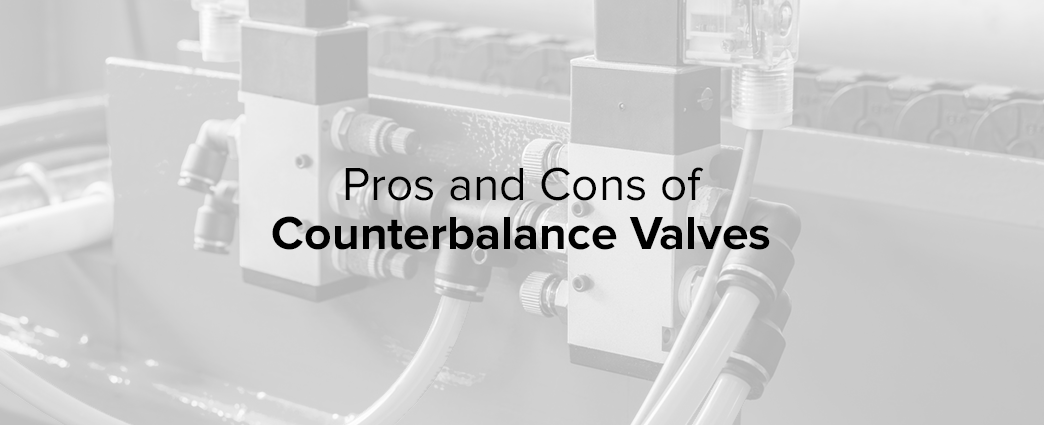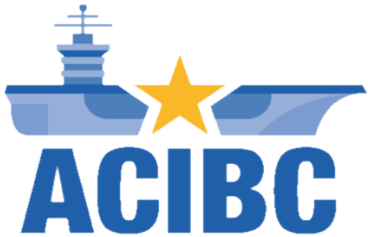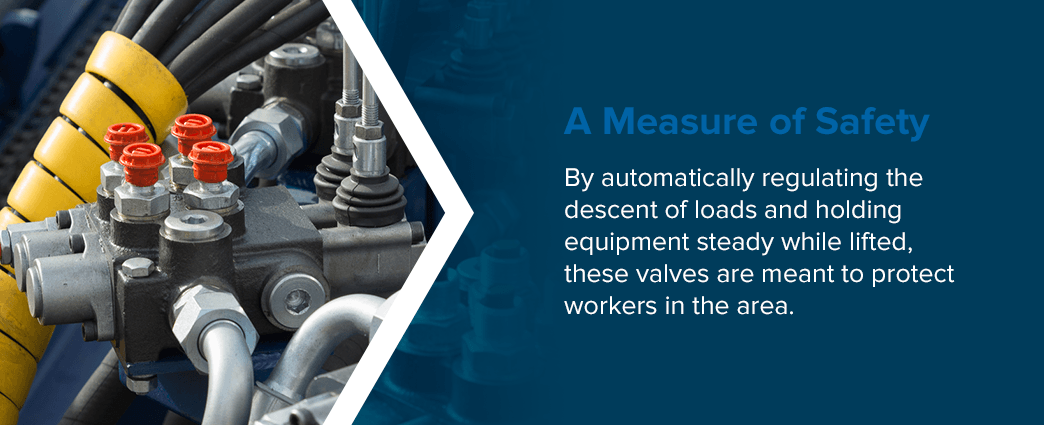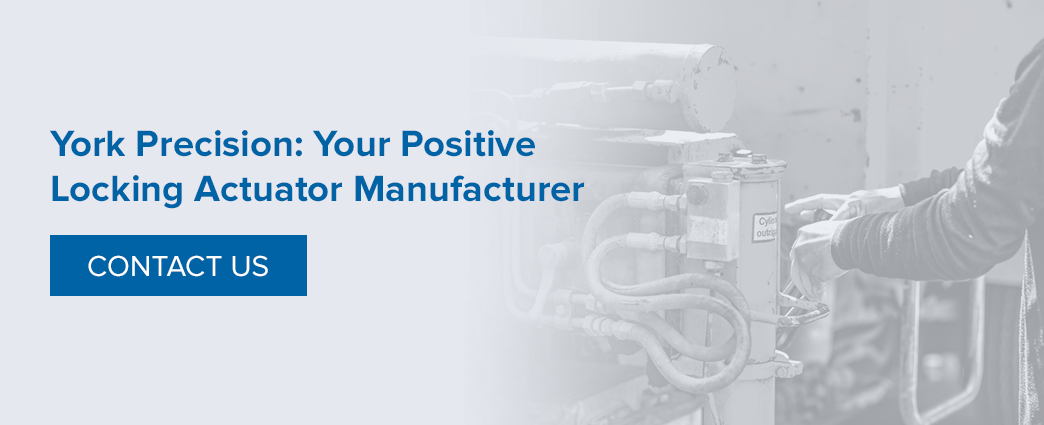Pros and Cons of Counterbalance Valves

Author: David Bickford
Principal Engineer, Innovation and Performance Excellence
York Precision Machining & Hydraulics LLC
A guide to optimal safety and productivity
Table of Contents
- What Are Counterbalance (Load-Holding) Valves?
- How Do Counterbalance Valves Work?
- What Types of Equipment Use Counterbalance Valves?
- Advantages of Counterbalance Valves
- Disadvantages of Counterbalance Valves
- Why Does it Pay to Use a Fail-Safe Locking Device?
- How Do You Select a Counterbalance Valve?
- Stepping Up Safety for Your Hydraulic System
- All those Applications, and more
When load-holding equipment fails, the damage can ruin lives and businesses. Persons injured or killed, property lost, fines, lawsuits and months of terrible publicity, with business lost and brands discredited.
In this article, we're going to discuss load-holding equipment. We're starting here with counterbalance valves (CBV). CBVs help hold a load in place and are also referred to as load-holding valves (LHV). These valves are common safety components of load-carrying equipment. When they operate as expected, they improve the safety of machinery. However, many equipment operators don't want to rest their safety on only the counterbalance valves — and for good reason. Understanding the pros and cons of these valves and knowing other supplemental options to combine with LHVs for safety will give you the ability to safely and productively use equipment that meets your load-holding requirements. In this guide, we'll discuss what load-holding valves are, how they work, their advantages and disadvantages and more.
What Are Counterbalance (Load-Holding) Valves?
A counterbalance, or load-holding, valve is a mechanism typically located near the actuator that uses hydraulic pressure to keep a load from moving. Generally, these valves have three related functions: support, control and safety.
When required for load support, these valves prevent a hydraulic actuator under load from drifting in position. When lowering loads, the counterbalance controls the rate or speed of motion of the load on the actuator.
What Is the Purpose of a Counterbalance Valve?
A hydraulic counterbalance valve controls the actuator in hydraulic systems for overriding or suspended loads. CBVs achieve this goal by creating back pressure at the return line to the actuator. The valve manages the pressure from impacts and loads to:
- Promote load stability.
- Prevent equipment damage.
- Manage hose failure.
- Stop runaway loads.
- Handle induced pressure.
- Manage variable and high back pressure.
- Compensate high system instability.
- Protect the system from burst hoses.
With all of these responsibilities, counterbalance valves are critical for safety. They manage pressure, flows and elements of extreme environments to stabilize loads. Low instability encourages safety and productivity in the hydraulic system.
Counterbalance valves are used in systems that have uncontrolled movements from overrunning loads. Since the pilot-operated check valve cannot control loads, counterbalance valves perform this function to prevent the load from dropping.
How Do Counterbalance Valves Work?
Counterbalance valves are hydraulic devices that function using this basic principle: fluid can freely flow through a check valve into the actuator, and reverse flow will be blocked using a relief valve until a pre-set pressure is reached that is set based on the system pressure and load capability. This pressure is higher than the system pressure when the load is applied and allows the fluid to flow in the opposite direction and the actuator to function. When pressure is removed, the valve goes below this set value, closes, and the load holds its place.
The preset pressure to the pilot port will determine the direction the load can move. To lift a load, the valve allows free flow through the check valve, so the cylinder can extend. When fluid flows to the rod end of the cylinder, this pressure will pilot open the valve, so you can lower the load. This pressure will decrease if the load starts to run away, and the counterbalance valve will adjust to match the cylinder speed to the pump flow.
[Load Holding Valve]: In this illustration, the lines are connected to the hydraulic cylinder and feed the hydraulic fluid to drive the cylinder in extension or retraction. Fluid supplied to the lower end of the cylinder provides force to drive the piston to extend the rod and position the crane boom. Fluid supplied above the piston to the cylinder rod end retracts the piston and rod and lowers the crane boom. The hydraulic system raises and lowers the crane boom to position the load over the location the load is to be lifted or lowered. If the hydraulic system has a failure, the boom will descend and the load would land on whatever it is elevated over, causing injury and damage to people and property.
What Types of Equipment Use Counterbalance Valves?
Many forms of equipment use load-holding valves in their overhead lift hydraulics systems, such as:
- Cranes
- Cherry pickers
- Boom trucks
- Shock tubes
- Wind tunnels
- Missile launchers
- Industrial presses
- Oil drilling rig
- Dam gates
- Barges
- Inspection vehicles
- Amusement park rides
Advantages of Counterbalance Valves
Load-holding valves offer some advantages for systems that use them. These benefits of counterbalance valves have made them a popular component of hydraulic systems across numerous sectors. Everything from the military to amusement parks use load-holding valves to provide function and safety to their equipment. Their main advantages are:
1. Safety Through Load Control
The most well-known attribute of load-holding valves is the measure of safety they offer to devices equipped with them. By automatically regulating the descent of loads and holding equipment steady while lifted, these valves are meant to protect workers in the area.
2. Simplified Design
The simple design of load-holding valves allows for multiple variations to accommodate individual needs. For systems with numerous hydraulic lifts, installing two-stage or restricting load-holding valves gives greater control over the entire system, while allowing for machinery that does more things.
Disadvantages of Counterbalance Valves
Load-holding valves also come with some serious shortcomings. You may want to replace or supplement your valve with solutions to compensate for these disadvantages, which include:
1. Not Fail-Safe, Limited Safety
The main disadvantage of counterbalance valves is that they are not fail-safe. In other words, they will protect your workers and equipment until they don't. If a valve opens too rapidly, you can experience instability. In the worst cases, your equipment could fail entirely, and your load could come crashing down. This typically occurs when the valve gets stuck in the open position. Also, CBVs are dependent on other hydraulic circuit components. Using a CBV as a primary safety means can mean that a failure in most points in the circuit, could cause a load to come down, regardless of the integrity of the CBVs. So their safety is dependent on the system, not simply their stand alone presence.
If you're trusting a counterbalance valve to keep a heavy load from damaging equipment and products or from hurting employees, you should plan for the worst and supplement it--with a locking device that is actually fail-safe.
2. Requires Checks and Adjustments
Check Valves require adjusting and checking the preset position. If the system loading changes it may necessitate the CBV to be adjusted. External pilot-operated load-holding valves don't need constant adjustments whenever you change loads, but other types of counterbalance valves do. This added step ensures control of the load every time and helps to maintain the valve's integrity.
Unlimited Safety: Why It Pays To Use A Fail-Safe Locking Device
Because load-holding valves or other components in a hydraulic circuit can fail, you need a supplementary safety accessory to prevent injuries or deaths on load-holding equipment. A mechanical locking mechanism, such as the Bear-Loc®, can be a valuable replacement or addition to any piece of load-bearing equipment. Bear-Loc® offers some major benefits, including:
· Reliability: The Bear-Loc® is a positive locking device that locks instantly and automatically when hydraulic pressure is lost accidentally or on purpose. For the person, property or equipment that's situated under a high or heavy load, that's a priceless, life-saving assurance.
· Durability: The key to Bear-Loc’s effectiveness is interference fit: it is composed of a rod and liners enclosed in a sleeve which forms an interference fit with the outside diameter of the rod. Because the Bear-Loc® can move freely when hydraulic pressure is applied, components do not experience wear as other locking devices do.
· Versatility: Bear-Loc® also features infinite position locking, zero backlash and high system stiffness when required. The Bear-Loc® works on large and small equipment, with customization options to lock up to four million pounds, accommodate sleeves from one inch to seven feet, and fit rods from one inch to 27 inches across.
Given all these features, and because the Bear-Loc® does not depend on valves, moving parts or other components to obtain its positive mechanical lock, it is the most reliable, positive, fail-safe rod locking device in the industry. The Bear-Loc® can work solo or in conjunction with existing equipment to keep people, equipment and projects safe and to optimize productivity.
How Do You Select a Counterbalance Valve?
The market has many options for counterbalance valves. When looking for a CBV, it is important to understand your options and choose a valve designed for your application.
Follow these steps to choose a hydraulic counterbalance valve for your application:
- Consider a basic CBV: Many applications are compatible with basic counterbalance valves. They are a cost-effective solution for static and dynamic loads. For example, a cherry picker is compatible with a basic CBV.
- Select a pilot ratio: Another factor to consider is the pilot ratio. High pilot ratios are best for consistent and stable loads, and low pilot ratios work for unstable and variable loads.
- Choose a relief function: CBVs have two types of relief functions — direct acting and differential area. Direct acting valves are stable, whereas differential area valves are designed for high-flow applications.
- Determine if you have a closed center directional valve: Some machines, like the wheel loader, have a closed center directional valve and counterbalanced valves. This application is not ideal for basic CBVs as they would close when the pressure builds up.
- Consider the back pressure: Some equipment, like cranes, creates constantly changing back pressure. Systems like these require a counterbalance valve that can adapt to the system conditions as they change.
- Look for hose burst protection: While all counterbalance valves protect from burst hoses, some CBVs are designed for additional protection. Special CBVs for hose burst work with the directional valve to control motion. Excavators commonly have this type of counterbalance valve to control the flow and pressure in the cylinders.
Stepping Up Safety for Your Hydraulic System
Below is a side by side comparison of a crane boom hydraulic system. The red outline in each indicates the scale of the number of components necessary to properly function for safety dependency. You can see that the Bear-Loc® can isolate safety down to dependency on itself and removes many other components that have potential to degrade or fail out of the safety equation.
All those Applications, and more
In addition to the applications listed earlier, virtually any application that requires linear force can benefit from use of the Bear-Loc hydraulic locking and load holding system, and its strength and efficiency are unmatched by any other system. For example, a Bear-Loc® actuator can have pulling or holding power up to 4 million pounds and an operating pressure of up to 5000 psi. Standing or static applications can range from above and below water/subsea applications, to presses that do injection molding or forging, to compactors, to testing such as fatigue and flight or aerodynamic simulation. Mobile applications can include inspection vehicles, construction, and mining equipment, and more.
To better understand the power and safety features of the positive locking system, visit our Case Studies below of how Bear-Loc® actuators have been used by our customers.
Awards & Certifications

ITAR Registered #M39417

Outstanding Performance

Excellence Presented By Commander

SIBC Member

ACIBC Member

NFPA Member









